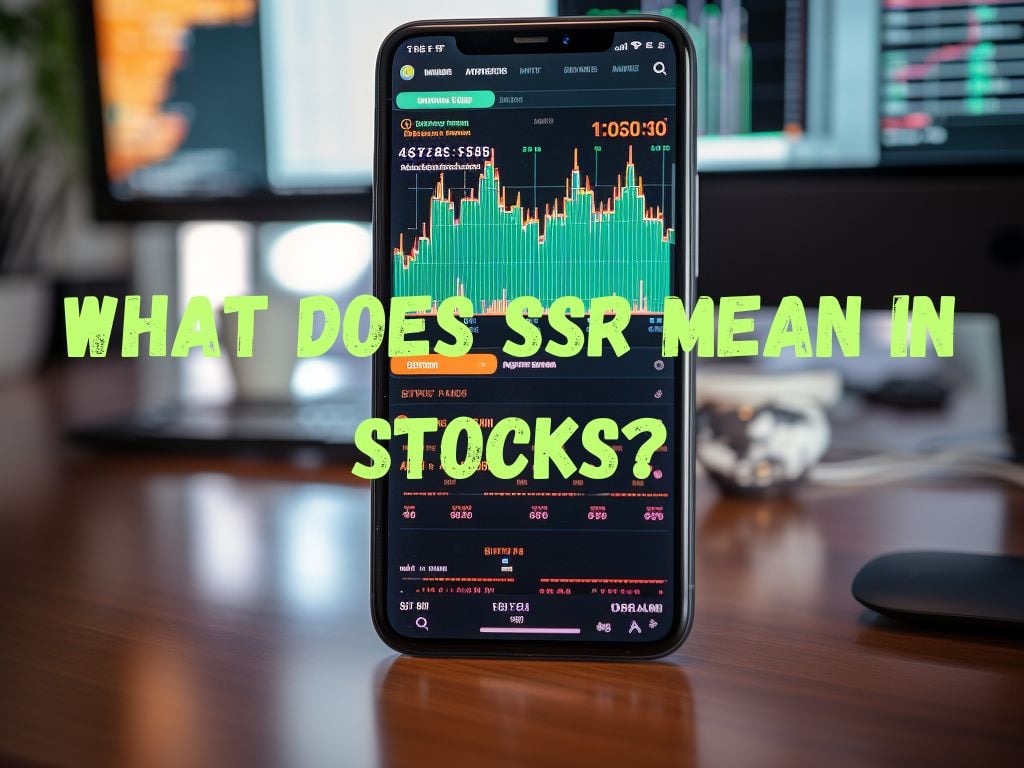The stock market can be a complex and sometimes volatile environment. To navigate it successfully, it’s crucial to understand the various rules and regulations that govern trading.
One such rule is the Short Sale Rule (SSR), which plays a significant role in shaping stock trading dynamics.
But, what does SSR mean in stocks? And why is it important to know?
In this article, we will demystify what SSR means in stocks and how it impacts trading. By the end, you’ll have a comprehensive understanding of SSR and its importance in the stock market.
What Does SSR Mean in Stocks?
At its core, the Short Sale Rule (SSR) is a regulation imposed by the U.S. Securities and Exchange Commission (SEC) to promote market stability and protect against excessive downward price pressure.
SSR comes into effect when the stock in question has experienced a significant decline in price over a short period.
When SSR is triggered, it places restrictions on short selling activity for the stock.
Short selling involves borrowing shares and selling them, in the hope that their price will decline further, allowing the investor to repurchase them at a lower price, return the borrowed shares, and pocket the difference as profit.

Short selling is a common practice in the stock market and plays a vital role in providing liquidity and price discovery.
However, when short selling is executed excessively or in a manipulative manner, it can exert significant downward pressure on stock prices, potentially destabilizing the market.
SSR aims to regulate and control short selling activities within a reasonable threshold that ensures market stability.
How Does SSR Affect Trading?
SSR affects trading dynamics in multiple ways. Firstly, when SSR is in effect for a particular stock, it creates a restriction on short selling.
This restriction aims to prevent further downward pressure on the stock’s price, thereby curbing extreme volatility.
Short sellers are unable to execute short sales on a downtick and must instead execute them at a higher price than the prevailing bid price.
This restriction helps prevent short sellers from aggressively driving down the stock’s price by piling on sell orders.
By limiting short selling during periods of significant price declines, SSR encourages market participants to think twice before engaging in speculative or manipulative trading practices.
SSR promotes a more cautious and informed approach to trading, safeguarding against abrupt price declines caused by excessive short selling.
It is important to note that SSR does not mean that short selling is completely banned or prohibited. Market participants can still engage in short selling, but they are subject to the restrictions imposed by SSR.
When trading with SSR in effect, investors need to adapt their strategies and consider alternative trading approaches, such as focusing on long positions or exploring other investment opportunities.
SSR Rules and Regulations
To gain a comprehensive understanding of SSR, it’s essential to acquaint yourself with the rules and regulations associated with it. The SEC has established guidelines defining when SSR comes into effect and how long it remains active.
Typically, SSR is triggered when a stock’s price declines by a predefined percentage from its previous day’s closing price, often set at 10% or more.
Once SSR is triggered, it remains in effect for the rest of the trading day and usually the following trading day as well.
During SSR, market participants are prohibited from executing short sales on a downtick. They must execute short sales at a higher price than the prevailing bid price.
This restriction aims to prevent short sellers from further pushing down the stock’s price, ensuring a more balanced trading environment.
Failure to comply with SSR rules can result in penalties, including fines and potential regulatory action.
Therefore, it is crucial for traders to stay informed about SSR triggers and comply with the regulations to avoid any legal consequences.

Frequently Asked Questions
Q: What is the difference between SSR and circuit breakers?
A: While SSR specifically targets short selling activity during periods of price declines, circuit breakers are mechanisms designed to temporarily halt trading in the event of extreme price fluctuations or significant market downturns.
Circuit breakers aim to provide breathing space, allowing the market to absorb information and stabilize before resuming trading.
Q: How does SSR affect short selling?
A: SSR restricts short selling during periods of substantial price declines to prevent excessive downward pressure on stocks. Traders must execute short sales at a higher price than the prevailing bid price until SSR is lifted.
This restriction can make short selling more challenging and less profitable during volatile market conditions.
Q: What are the benefits of SSR for investors?
A: SSR helps maintain market stability and prevents abrupt price declines caused by excessive short selling. This benefits all market participants by reducing the risk of extreme volatility and potential market manipulation.
Additionally, SSR encourages traders to engage in more informed and cautious decision-making, fostering a healthier trading environment.
Pro Tips for Trading with SSR
Stay informed:
Keep track of the stocks that are subject to SSR. Understanding the triggers and duration of SSR is essential for making informed trading decisions.
Stay updated with market news, stock alerts, and announcements to be aware of which stocks are currently affected by SSR.
Adapt your strategy:
During SSR, consider adjusting your short-term trading strategies to account for the restrictions on short selling. Instead of relying solely on short positions, focus on long positions or explore other investment opportunities until SSR is lifted, such as options trading.
Diversifying your trading strategies can help hedge against constraints imposed by SSR.
Evaluate historical data:
Analyze historical data to identify patterns and trends during periods of SSR. Investigate how individual stocks or sectors have reacted in the past when SSR was in effect.
This analysis can provide valuable insights for shaping your trading strategies during future SSR situations.
Monitor trading volumes:
Pay close attention to trading volumes during SSR periods. High trading volumes coupled with SSR restrictions may create additional volatility and potential price distortions.
Being aware of these factors can help you make more informed decisions and manage your risk effectively.

Maintain discipline:
Trading with SSR requires discipline and patience. Emotions can drive impulsive trading decisions, especially when you encounter restrictions on short selling.
Stick to your trading plan, conduct thorough research, and be mindful of the rules and regulations under SSR. Maintaining a disciplined approach will help you navigate the market more effectively.
Seek professional advice:
If you are uncertain about trading with SSR, consider seeking guidance from a reputable financial advisor or broker.
They can provide expert opinions and help you devise suitable strategies tailored to your individual circumstances.
Conclusion
The Short Sale Rule (SSR) is a crucial regulation that promotes market stability and protects against excessive downward price pressure.
By limiting short selling during periods of significant price declines, SSR aims to reduce volatility, potential market manipulation, and market abuses.
Understanding SSR and its implications is essential for traders to navigate the stock market successfully. Adhering to the rules, adapting strategies, and staying informed about triggers and duration of SSR can help traders make more informed decisions and contribute to a healthier trading environment.
By leveraging the insights provided and complying with SSR regulations, traders can navigate the market effectively while contributing to market stability.


 Tags:
Tags:










